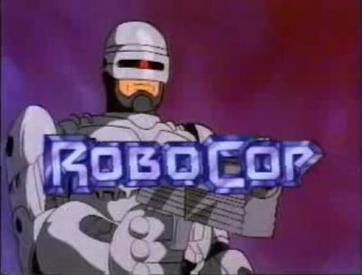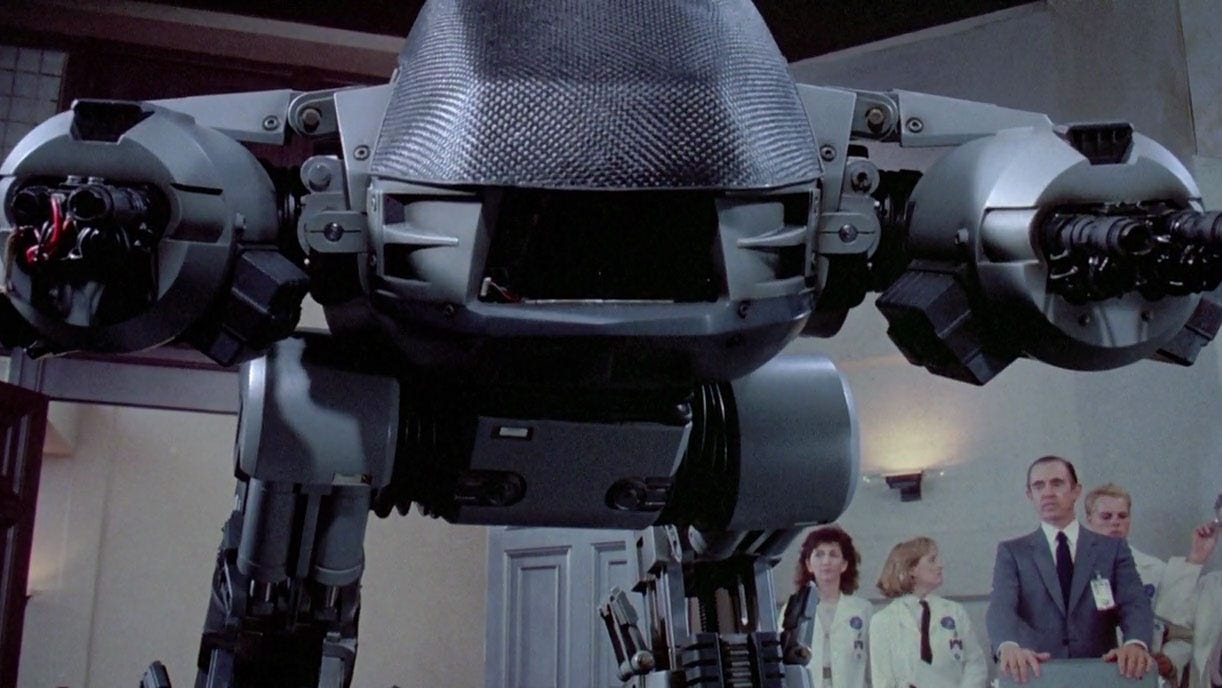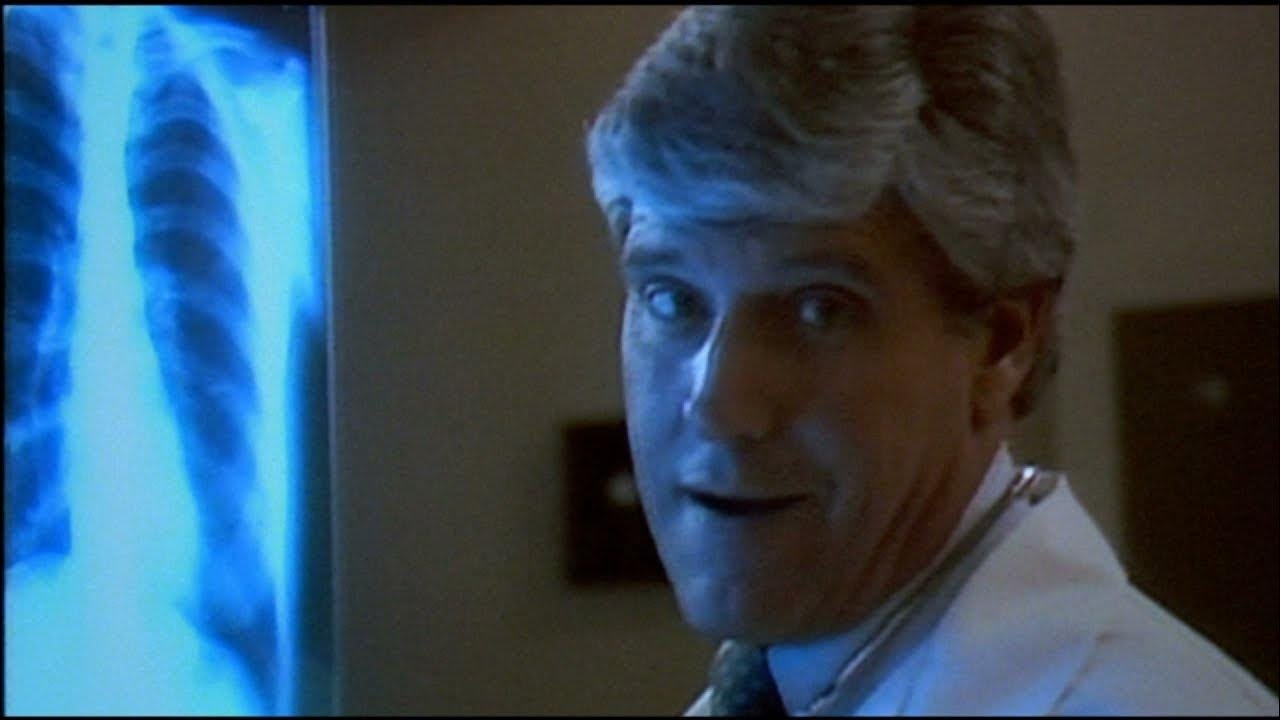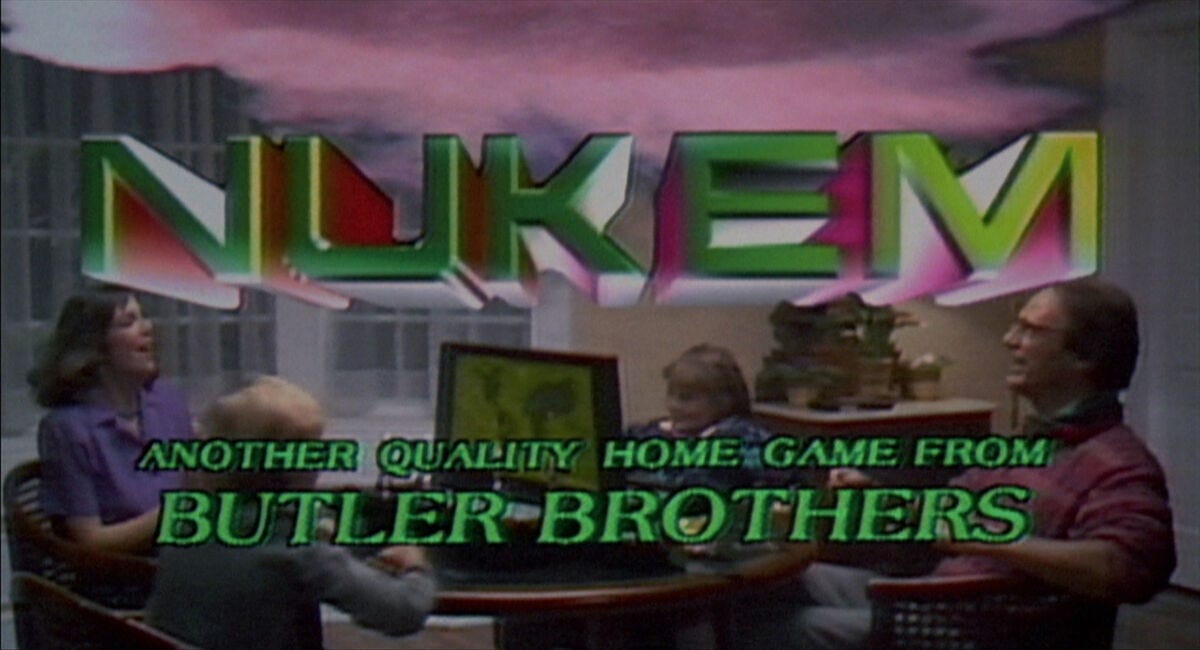A Deeper Look at Robocop
The Prescient Worldbuilding of Paul Verhoeven's 1987 Sci-Fi Classic
For many fans of cinema, movie director Paul Verhoeven needs no introduction. Those not familiar with him by name only will undoubtedly recognize several films from his vast body of work in the industry. Total Recall, Showgirls, and Starship Troopers1 are a few easily identified movies that have become cult classics in one fashion or another.
Verhoeven’s style of directing and looking at the bigger societal picture reminds me of Denis Villeneuve, another director whose films make one think on the issues raised long after seeing their work. The small details these directors add are what really make the fictional worlds they create stand out to the audience.
His 1987 science fiction dystopian film Robocop has always fascinated me; from watching it at a very inappropriate young age2, to even now almost four decades after its initial release. Proof of its appeal show in the numerous sequels, reboots, and video games that are still being produced today. The movie always kind of hit differently, and over the years of re-watching it from time to time, some new perspectives began to emerge.
Plot summary (no spoilers)
The plot of the movie revolves around Detroit police officer Alex Murphy being transferred to a very dangerous precinct of the city, one that he personally requested. This is remarked upon by other officers, chiding him about voluntarily leaving what they considered a cushy assignment in the suburbs. Viewers quickly learn that Murphy has a deep sense of duty and upholding the law, hence why he goes where he can make the biggest difference.3
Set in 2043, the city of Detroit is de facto ruled by the Omni Consumer Products (OCP) corporation, with the company controlling the police force and having influence in most other functions of the city. Large parts of the metropolis, mainly in an area called “Old Detroit”, are practically lawless zones, with many in the police department contemplating going on strike for better pay and work conditions. Police are being injured and killed daily with the lack of resources and support from OCP becoming apparent. Unbeknownst to the cops, OCP is quietly working on replacing them altogether with autonomous AI law enforcement robots. How this project is faltering gets shown in a dark company boardroom scene where the ED-209 prototype malfunctions and performs an impromptu downsizing of a junior corporate executive.
At the station, Murphy is paired with his new partner Lewis, a street smart officer who is nicely played by actress Nancy Allen.4 While on patrol. Murphy is apparently killed by a criminal gang run by Clarence Boddiker, who the audience later finds out has high-level connections within the OCP corporation, and is helping to foment the crime wave in “Old Detroit” to forward the goals of OCP’s eventual takeover and rebuilding of the city to their liking.
OCP takes this opportunity to transform his corpse into a cybernetic law enforcement officer aptly named: Robocop. This fusion of man and machine is programmed with three prime directives; serve the public trust, protect the innocent, and uphold the law. A hidden 4th directive prevents Robocop from arresting or harming any OCP executives.
Robocop is returned to the original precinct Murphy initially was assigned to and begins his duties as an efficient crime fighter. The rest of the movie is an interesting study on the ramifications of putting a human into a cybernetic body, as well as touching on themes of corporate greed and overall decay in a supposed “advanced” technological society.
That the movie still holds up nearly 40 years after its release is a testament to director Verhoeven’s skill and vision.
What Stands Out
On the surface, Robocop presents as a standard 1980s Sci-Fi film about a cyborg crime fighter in a fictional dystopian future city riddled with corporate greed.
But a closer look at the smaller elements added into the film reveal a much larger understanding of the world that Verhoeven created, thus what makes this a special film. Take the occasional news reports and commercials interspersed throughout the movie, for example. These brief glimpses into events happening within this universe show the audience a macro view of the dystopian future envisioned.
Progress?
One commercial begins with a kindly doctor walking the hallway of a medical center and extolling the wonders of having an artificial heart. It isn’t mentioned, yet it’s implied that in this fictional world, practically all organs5 can now be replaced… for a price.
The doctor cheerfully goes over the number of heart models that are available, like a high activity sports model and even including specific brands such as Jensen and Yamaha customers can choose from. He doesn’t forget to remark that financing, extended warranty, and tax credits can be options to obtain these technological wonders of medicine. Sound familiar?
Compare this satirical sales pitch of a fictional healthcare industry with what’s presented today and there isn’t much of a difference. Turn on any channel and one is bombarded with advertisements from the pharmaceutical industry promising untold benefits and wellness from their products. Between Ozempic, Neuralink, and other marvels of science, everything is seemingly available for those who can afford it. No, we haven’t quite mastered artificial organ replacement, but is it that far away in our future at this point?6
Another commercial is for a board game called “Nuke Em” that makes light of the looming threat during the Cold War of nuclear conflict. A family cheerfully gathers in the living room to simulate global destruction of humanity in a nuclear fireball.
“A family that commits thermonuclear war together, stays together”
- On the game box (probably)
This bit satire on the attitude of possible annihilation of the human race is humorous but has the danger of nuclear conflict truly passed? Some act as if it is entirely gone. If anything, the current age has brought this danger more into the realm of possibility as rogue powers attempt to become nuclear-tipped nations.
The Media
The fictional news program gives even more insight into what kind of world Robocop is. Named “MediaBreak”, it acts as a stand-in for modern newscasts such as CNN or Fox, with the two anchors delivering their reports in a tone usually reserved for a sunny weather forecast—no matter the subject material.
Even as this fictional world is on fire7, the flippant attitude displayed by the news media eerily resembles a lot of coverage seen today. One sequence reports on a firefight between US military forces and Mexican rebels in Acapulco with the seriousness of a city park playground grand opening. Another mentions the possibility of nuclear war in Africa with the air and brevity of a local tax proposal. The sycophancy shown by the media towards OCP isn’t missed either.
However, this mirrors a lot of modern media today.
A good portion of mainstream media’s coverage of current geopolitical situations present them in the simplest, Marvel-brained8 way possible. Events that could easily spill over into larger, far more dangerous global conflicts, are treated like a sitcom plot where the only thing to figure out is how to get the clueless dad character to understand his kids.
This is only turbo-charged by the 24/7 news cycle and the rise of social media journalism. Robocop wasn’t the only cinema to predict the current media apathy, but it captures the essence of this phenomenon nicely.9
Omni Consumer Products
The real villain of the movie isn’t the crime boss Boddiker, or the chaos in the streets caused by rampant crime. No, it is the soulless OCP mega-corporation and its ambitions to make an American city their own personal fiefdom for profit and total control. A company with its tentacles and reach that expands into military weaponry and private space exploration (sound familiar?) with profit and shareholder dividends driving every decision. OCP represents the Apex of predatory capitalism taken to its logical (and horrific) conclusion.
A company that owns the very souls of its employees.10
This message of an overbearing corporate entity hits a little too close to home as society becomes accustomed to the modern titans of Amazon, Google, and yes, even former darlings of the Right like Elon Musk’s companies SpaceX and Tesla.11 The intrusions into our lives have become inescapable with others such as Palantir and Blackrock joining the list of corporations whose intentions for humanity can be, well, suspect is saying it politely. Adding in the promises of AI as a sort of paradigm of virtue and prosperity for society as a whole — without fully showing evidence for such claims, and it begins to feel dystopian indeed.
Conclusion
Verhoeven’s Robocop is a visualization of a future world of transhumanism, apathy, advanced technology, and levels of corporate control thought unimaginable just four decades ago. The reality of our modern age is much too similar to this fictional movie than many would like to admit.
He famously refused to read the entirety of Robert Heinlein’s novel of the same name before filming in the belief that he had it all figured out as “fascist rubbish.”
That an R-rated sci-fi film would go on to become a Saturday morning cartoon, albeit with some significant toning down on the violence is peak 1980s Americana pop culture.
This sets the tone for why Murphy eventually gets turned into a robotic cyborg Superman that believes in truth, justice, and the American way. Sort of.
Why Hollywood lost the ability to write competent, believable female characters in these action movie roles is a travesty. Officer Lewis is not portrayed as some invincible Marvel girlboss, or HR cat lady stand-in. Well done Hollywood. Bring these characters back.
Having the ability to make a human-machine hybrid also makes this obvious.
Robocop is set in 2043, only 18 years away. It isn’t hard to believe that artificial organs will be a reality at that point.
Literally, it’s on fire. As one news piece details, an errant space laser test torches Santa Barbara, killing two former US presidents in the process.
Marvel-brain is the idea of viewing every problem in the world with a defined and absolute good guy vs. bad guy dichotomy that is stripped entirely of complexity or nuance.
Everyone can easily point out figures who are exceptions to this in mainstream media, but the exceptions are not the rule.
The reason Alex Murphy is quickly whisked away from the hospital to OCP headquarters is due to his contract stipulating that OCP owns his body.
Mr. $500 billion with a “B” now, by the way.






"I'd buy that for a dollar!"
Except that they had cheaper gas in Robocop 🤣🤣